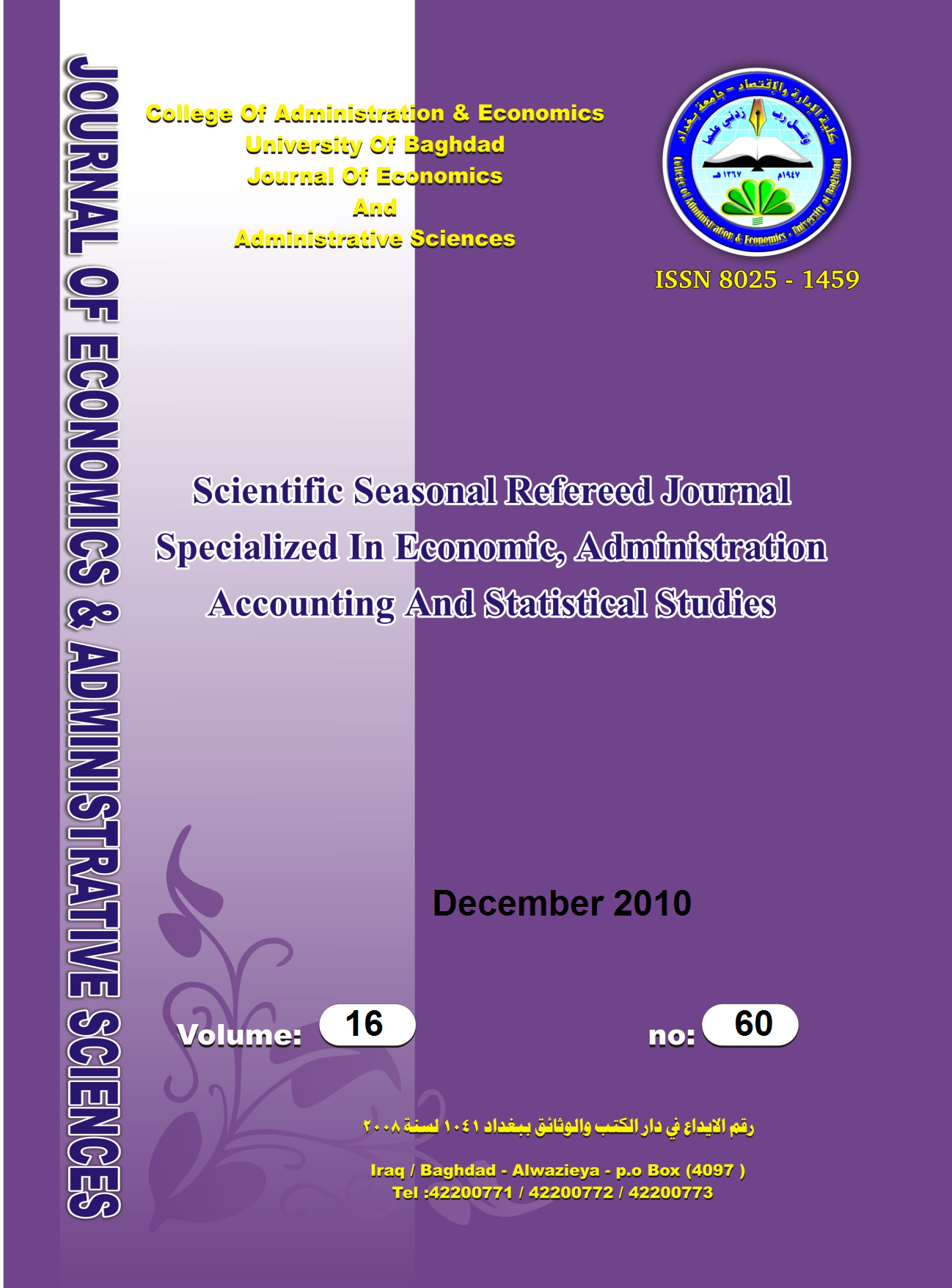حوالات الخزينة واستخداماتها في العراق
DOI:
https://doi.org/10.33095/jeas.v16i60.1521Keywords:
حوالات الخزينة واستخداماتها في العراقAbstract
ABSTRACT
The Iraqi Government had used all Possible methods of financing the fiscal deficit according to the economic and Political Circumstances at the time. It had borrowed from abroad during the 1980s. Those methods of borrowing led to negative impacts on the Iraqi economy such as increased external dept burden, higher inflation rate, negative interest rate and accumulation of domestic debt.
The "Financial Management and Public Debt" law no 95/ 2004 made a great change in those methods of Financing fiscal deficit in Iraq. Before 2004, the deficit was financed by issuing Treasury Bills and selling them to the Central Bank of Iraq with a prefixed interest rate. Thus, it is, in fact, a financing by new cash issuance. However, after the issuance of law 95/ 2004, and the issuance of the CBI law no. 56/ 2004, in addition th setting the instruction of selling treasury bills in public auctions by the Ministry of Finance, and stopping the CBI to lend funds to the Government, the financing of the deficit using the TB became a systematic process based on competition in wich the commercial banks only can participate.
Accordingly, the MOF had made (106) auctions of (91) days during 2004- 2009 of which (18) auctions that were cancelled for different reasons. The average of participation of banks was ultimately in 2004: 9 out of 32 commercial banks participated in the auctions.
The amounts of the TB sold was about (16.2) trillion Iraqi Dinars for the same duration. The interest rate's average was between 21% for 2007 and 4.1% for 2004 which runs parallel to the CBI interest rate. The commercial banks had the greater share of the TB's, ehich was between (66- 84%) of the value of the TB's.
Downloads
Published
Issue
Section
License
Articles submitted to the journal should not have been published before in their current or substantially similar form or be under consideration for publication with another journal. Please see JEAS originality guidelines for details. Use this in conjunction with the points below about references, before submission i.e. always attribute clearly using either indented text or quote marks as well as making use of the preferred Harvard style of formatting. Authors submitting articles for publication warrant that the work is not an infringement of any existing copyright and will indemnify the publisher against any breach of such warranty. For ease of dissemination and to ensure proper policing of use, papers and contributions become the legal copyright of the publisher unless otherwise agreed.
The editor may make use of Turtitin software for checking the originality of submissions received.


























